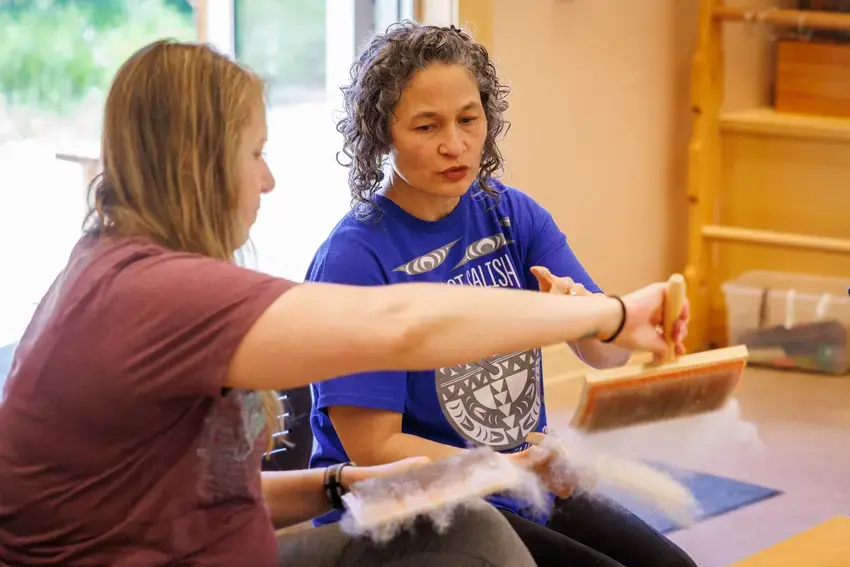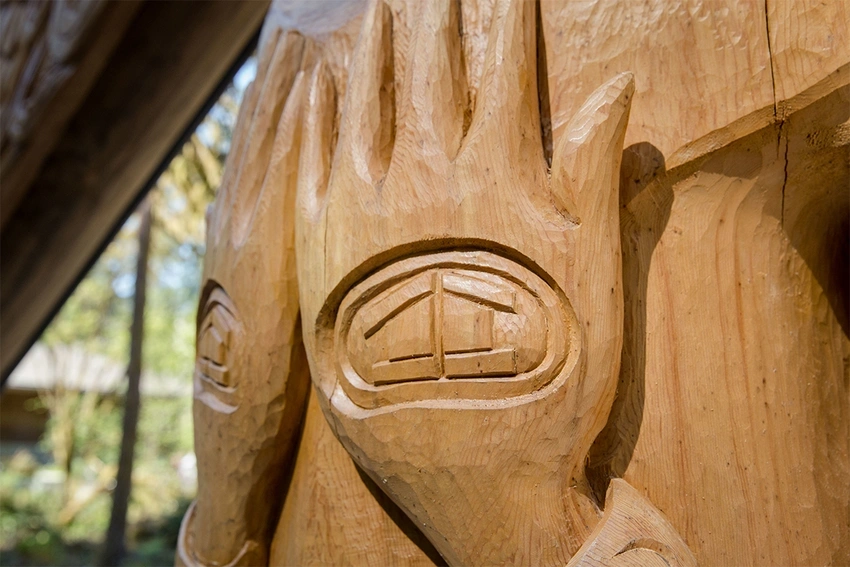The First of its Kind
The House of Welcome opened on The Evergreen State College Olympia campus in September, 1995. The mission of our public service work is to advance Native American Tribal arts and cultures through education, cultural exchange, intergenerational teaching and learning, and economic opportunity while embracing and advancing relationships with Indigenous peoples in the world.
The History of the House of Welcome
The Evergreen State College's House of Welcome Cultural Arts Center is a public service center and was built in collaboration with Northwest Tribes. It is the first building of its kind on a public campus in the United States. This multi-purpose facility is designed to serve a variety of educational, cultural and community functions. Founded upon a vision of hospitality and service, it is a gathering place for people of all cultural backgrounds to teach and learn with each other.
The House of Welcome is dedicated to supporting Native arts and culture.

The Indigenous Arts Campus
These studios have allowed the House of Welcome to greatly expand its ability to offer a wide variety of classes and workshops that include fiber arts, carving and relief printmaking. Many Tribes, individuals and foundations made the studios possible through generous donations.

Support the House of Welcome
Make a gift to further the s'gʷi gʷi ʔ altxʷ: House of Welcome's leadership in the Pacific Northwest art community and to support the Indigenous Arts Campus.
